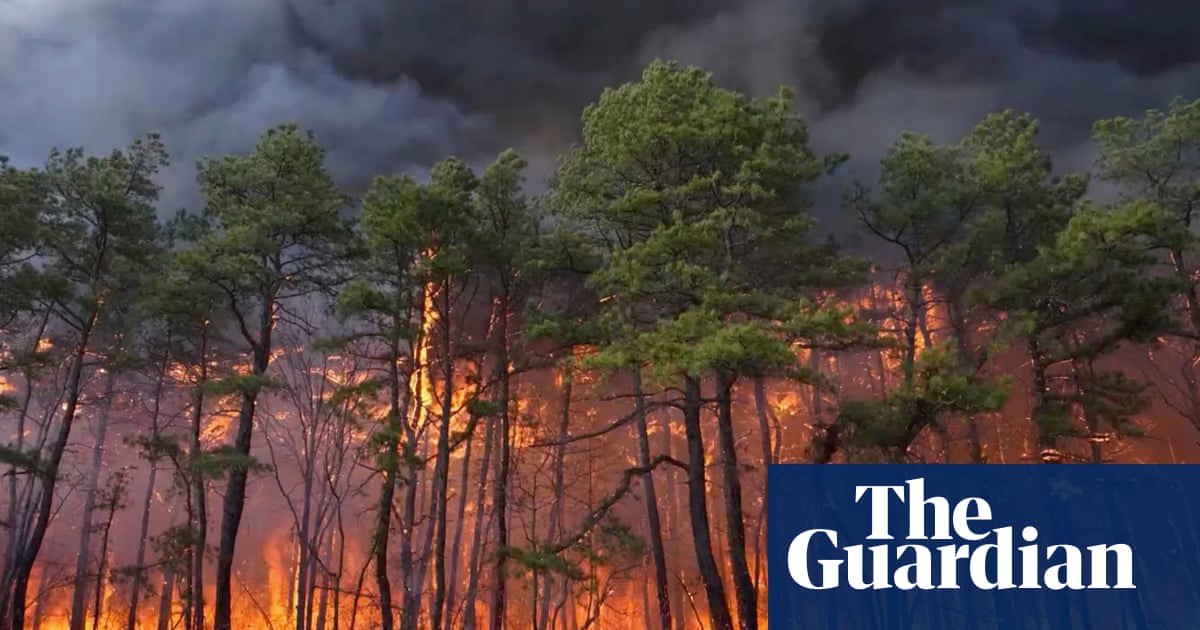Toxic pollution fromwildfireshas infiltrated the homes of more than a billion people a year over the last two decades, according to new research.
Theclimate crisisis driving up the risk of wildfires by increasing heatwaves and droughts, making the issue of wildfire smoke a “pressing global issue”, scientists said.
The tiny particles produced by wildfires cantravel thousands of milesand are known to be more toxic than urban air pollution, due to higher concentrations of chemicals that cause inflammation. Wildfire pollution has been linked to early deaths, worsened heart and breathing diseases and premature births.
Previous studies have analysed outdoor exposure to wildfire smoke, but people spend most of their time indoors, particularly when seeking refuge from wildfires. The new analysis is the first global, high-resolution study of indoor spikes in wildfire pollution.
The greatest exposure was in South America and central Africa, followed by the west coast of North America, north-west Australia, and north and south-east Asia.
Indoor pollution can be reduced using air purifiers at significantly lower cost than the health damage the pollution causes. However, the scientists noted that some of the people most affected live in poorer nations and would need help to afford the equipment.
“Even when doors and windows were closed, individuals remaining indoors were still greatly affected by [wildfire pollution],” said Dongjia Han, of Tsinghua University in Beijing, and her colleagues. “Consequently, there is a pressing need for more effective measures to reduce exposure to indoor wildfire particles.”
A recent study found that even with closed doors and windows, indoor pollution concentrations on wildfire days can be nearly three times higher than on normal days.
The new study,published in the journal Science Advances, used an established dataset of wildfire pollution, based on satellite observations of blazes, to model indoor exposure around the world from 2003 to 2022. They found that more than 1 billion people a year had at least one day when indoor particle levels were above World Health Organization (WHO) limits, with wildfires responsible for at least half of the pollution.
The work builds on previous analyses of indoor wildfire pollution in North America, Australia, and south-east Asia which found sharp increases in particle levels. Studies in California, Australia and Brazil have shown that the cost of the damage to health resulting from wildfire smoke runs into many billions of dollars and is much higher than the costs of running air purifiers.
Sign up toDown to Earth
The planet's most important stories. Get all the week's environment news - the good, the bad and the essential
after newsletter promotion
The study estimated how much it would cost to bring indoor pollution levels down well below the WHO guidelines using air purifiers. It found the cost of buying, maintaining and running the purifiers would be hundreds of dollars a year per household. “These results suggest that a modest investment in air purifiers can yield substantial economic and health benefits during wildfire episodes,” the scientists said.
However, in low-income countries such as Niger and Chad, the annual costs of air purifiers were greater than the average yearly income. “[This] provides compelling evidence of climate injustice, by exposing those who cannot afford the cost of air purifiers to higher health risks,” the researchers said. “Therefore, government support is necessary to narrow the inequality.”
There are other measures that can reduce exposure, the scientists said, such as wearing face masks, relocating vulnerable people away from the fires, and making buildings more airtight.
Jing Li and Yifang Zhu, both of the University of California, Los Angeles, and not part of the study team, said: “As wildfires continue to intensify due to climate change, reducing indoor exposure to wildfire smoke has become a pressing global issue that goes beyond individual action and requires comprehensive, policy-driven solutions.”
They said more research was needed to validate the modelling study with on-the-ground measurements and exploration of factors such as the age of buildings, as older buildings have been shown to let more smoke in, and whether an increase in cooking indoors during wildfires adds to the pollution levels.
